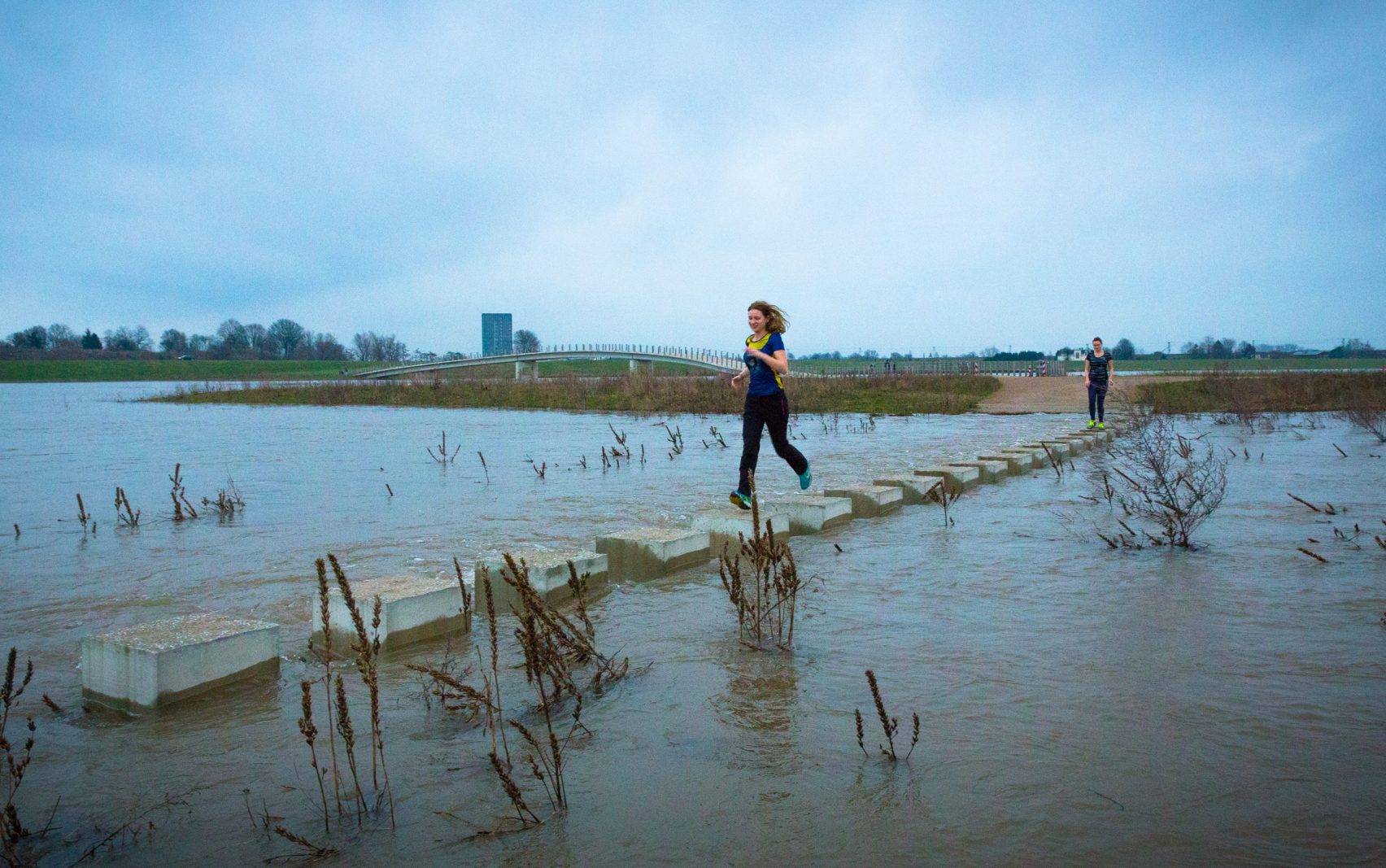In low-lying Dutch city of Nijmegen, rising water levels from the nearby Waal River poses a real threat to communties. For centuries, dykes have helped manage severe flooding in the area. But as PRI notes, even those structures are starting to crack, putting the city’s infrastructure at risk.
Instead of fighting the rising tides, architects have designed a bridge that adapts to rising sea levels in Nijmegen. Dutch design firms Next Architects and H+N+S Landscape Architects created the Zalige bridge, which is meant to partially flood after storms.
Even when water submerges the bridge, pedestrians can still use its stepping stones to cross it.
Check it out below.
The Zalige bridge straddles the Waal river, located in the 2,000-year-old city of Nijmegen.

The region is known for its chronic flooding, when can damage roads, homes, and other infrastructure along the coast.
Located in the floodplain, the bridge features stepping stones so that visitors can use it even when surrounding tides are high.

Next Architects describes the bridge as "the ultimate place to experience the high water."

Source: Next Architects
"As a crest above the river, the bridge emphasizes the dynamic character of water by letting people see and experience the changing river landscape," the team writes.

Source: Next Architects
The project was part of Room for the River Waal, a nationwide campaign by the Dutch ministry of Infrastructure and the Environment. The goal was to encourage more flood-resilient architecture.

The bridge was completed in 2016, and it was put to the test in January 2018, when the water rose to its highest level in 15 years.

Source: Dezeen
Next Architects is known for its non-traditional approach to bridge design.

In 2017, the firm also designed the Lucky Knot bridge — which includes three pedestrian bridges woven into one — in Changsha, China.

Source: Business Insider
Like Next's other designs, the Zalige bridge is anything but ordinary.

Check out an aerial view of the project below:

